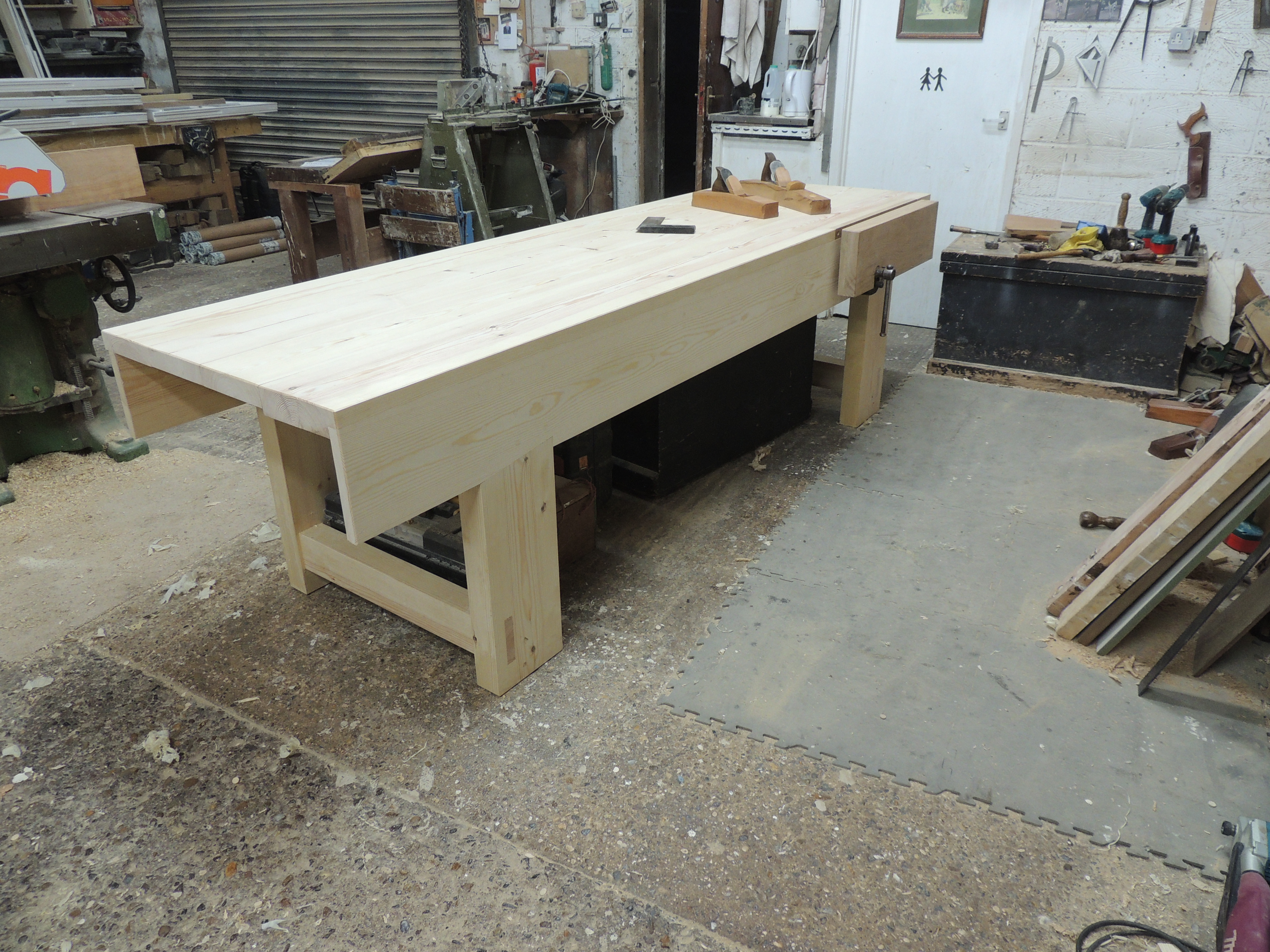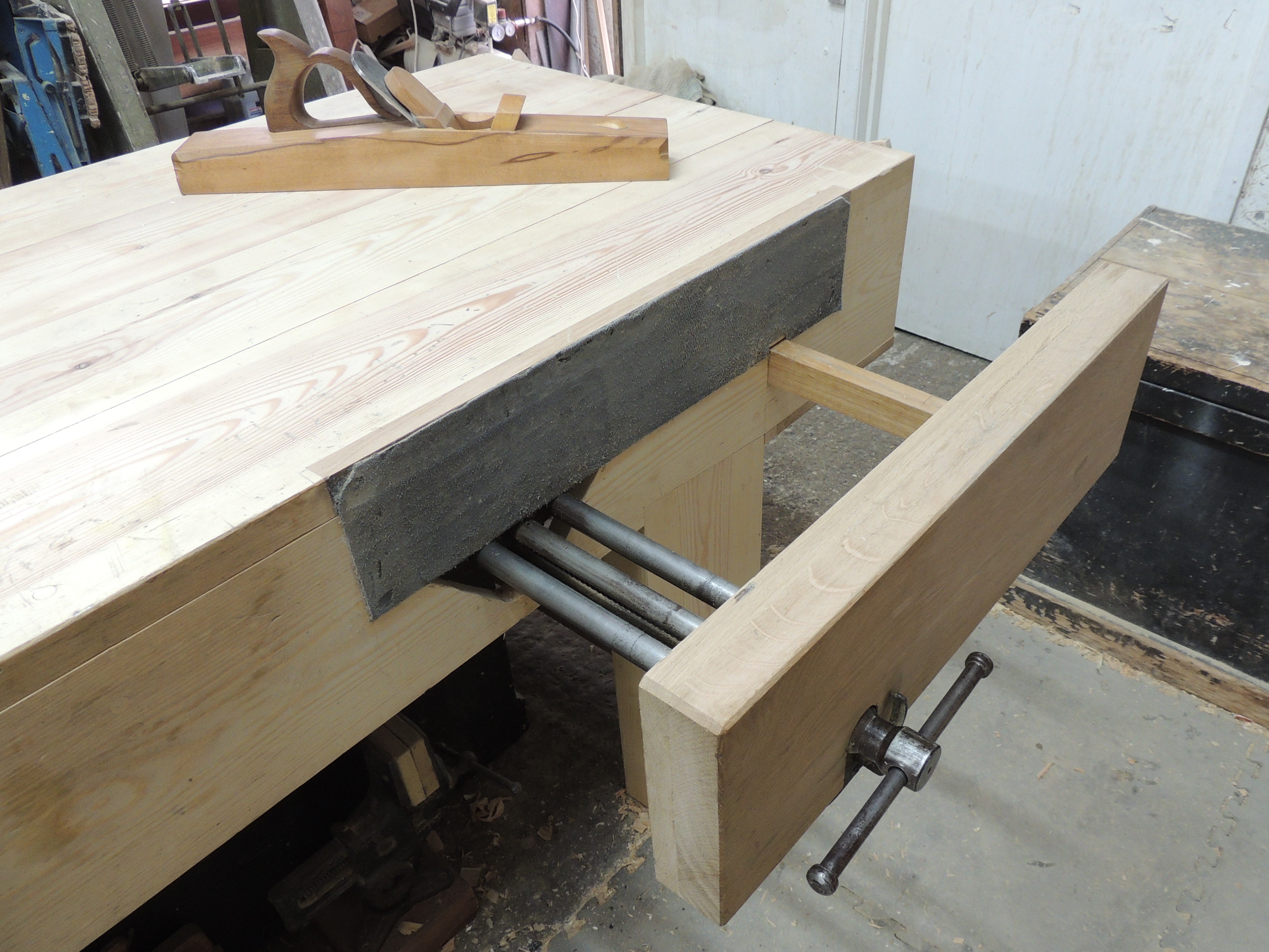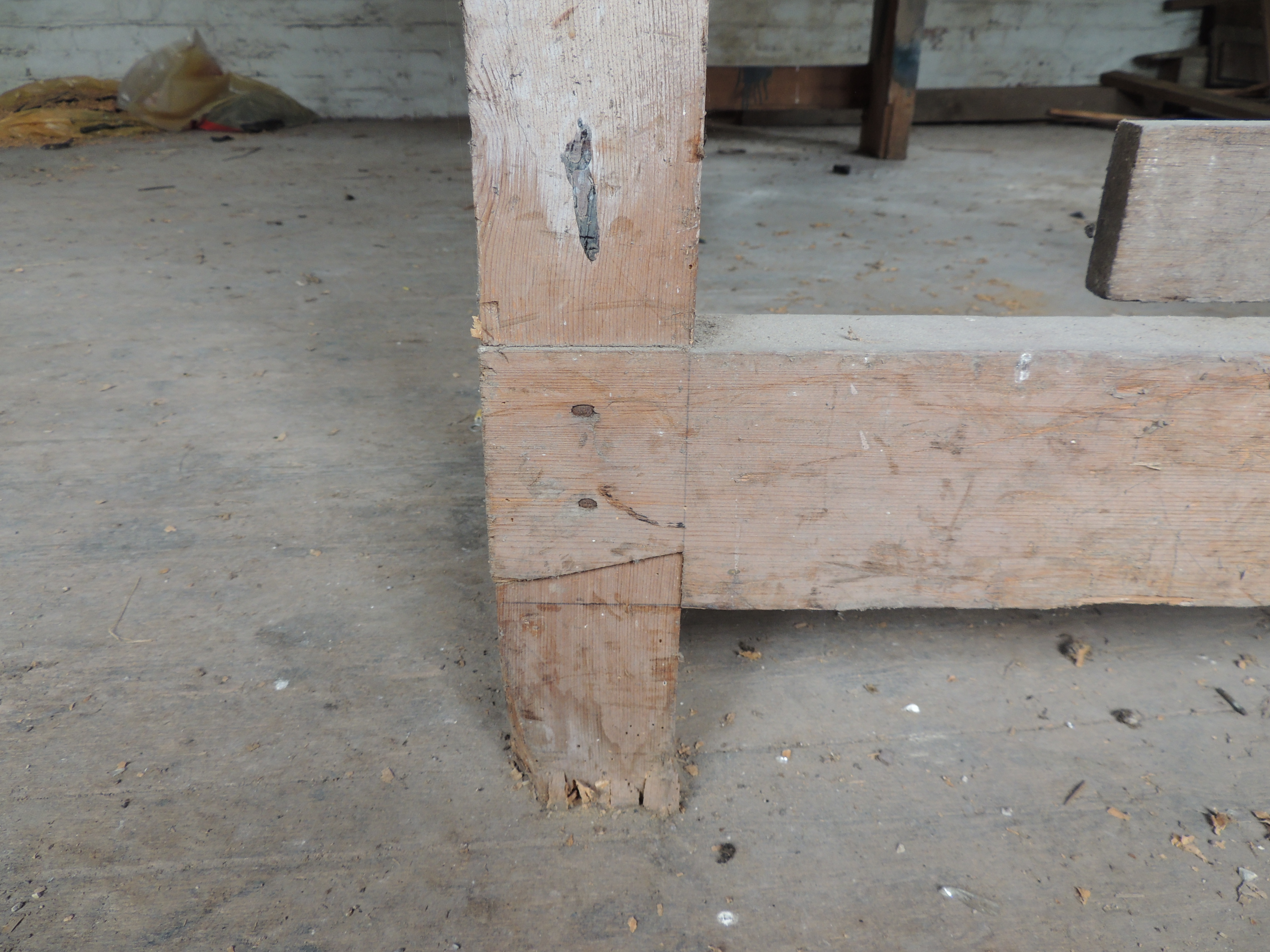ah I see - in that case, apologies for my sarky response!
Don't the dovetails help prevent the legs racking/pulling apart e.g when shoving the bench round your workshop?
thanks for the tip on gluing - as it happens I did notice that RM applied the glue to both surfaces, so I did the same - I wasn't really sure how much was needed so just tied to create a sort of fattish film.
The final two things I did over the weekend were to attach the top bearers and also to clean up my vice, which I bought last April. Once I removed all the crud, paint, dried oil etc and applied some lubricant it works very well and there does not seem to be any serious wear to the nut or screw.
A tip I got from this forum was to use teflon lube for this type of job as it forms a dry coating and does not attract shavings/dust/dirt as much as light oil or grease (apparently it is popular for bicycle chains for the same reason)
One reason for taking it apart, other than to clean it, was to see how practical it would be to reassemble it when the rear carriage was attached to the bench. The answer is that it would be awkward but not impossible.
The reason I'm interested - and apologies in advance to sticky-out vice fans - is I am thinking about mounting it flush to the apron, and I thought one way to do this was to mount the rear carriage (separated from the rest of the vice) on the inside of the bench (using coach screws to attach it to the top and apron) and then to create a slot in the apron so the screw and rails can be pushed through into the rear carriage
The downside is that you lose an inch or so from full extent the vice opens, but it does mean you can screw in all 4 bolts on the rear carriage to the bench top (if you face mount it then 2 of the holes are obscured by the apron) and this might be useful in my case as I will have a thin top (~1 1'2 '' after flattening) to receive the screws.
The alternative seems to be to create a recess in the apron to receive the rear metal jaw, which I am not sure has any particular advantage over the above (other than not having to dismantle the vice), does it?.
c.f Richard Arnold's bench for an example - Richard if you are reading, how did you do to fit yours?












